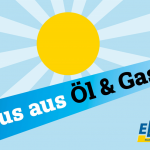PANNONISCHE STAUDENBEETE | … trotzen den heißen Temperaturen und sind klimafit, konnten die Teilnehmer:innen beim Grünraumspaziergang durch Bruck/Leitha mit Landschaftsplaner Helmut Lehner erfahren. Hitzeresistent und dennoch wunderbar bunt, vielfältig und pflegeleicht sind die pannonischen Staudenbeete, die es in Bruck an vielen Straßen und öffentlichen Plätzen zu bewundern gibt.
Organisiert und begleitet durch KEM Energie³ Managerin Irene Schrenk führte Helmut Lehner durch die Stadt. Im Zuge des Grünraumspaziergangs wurde im Garten der evangelischen Pfarre als Abschluss ein Apfelbaum gepflanzt, der bald nicht nur saftige Früchte sondern auch Schatten spenden wird.

